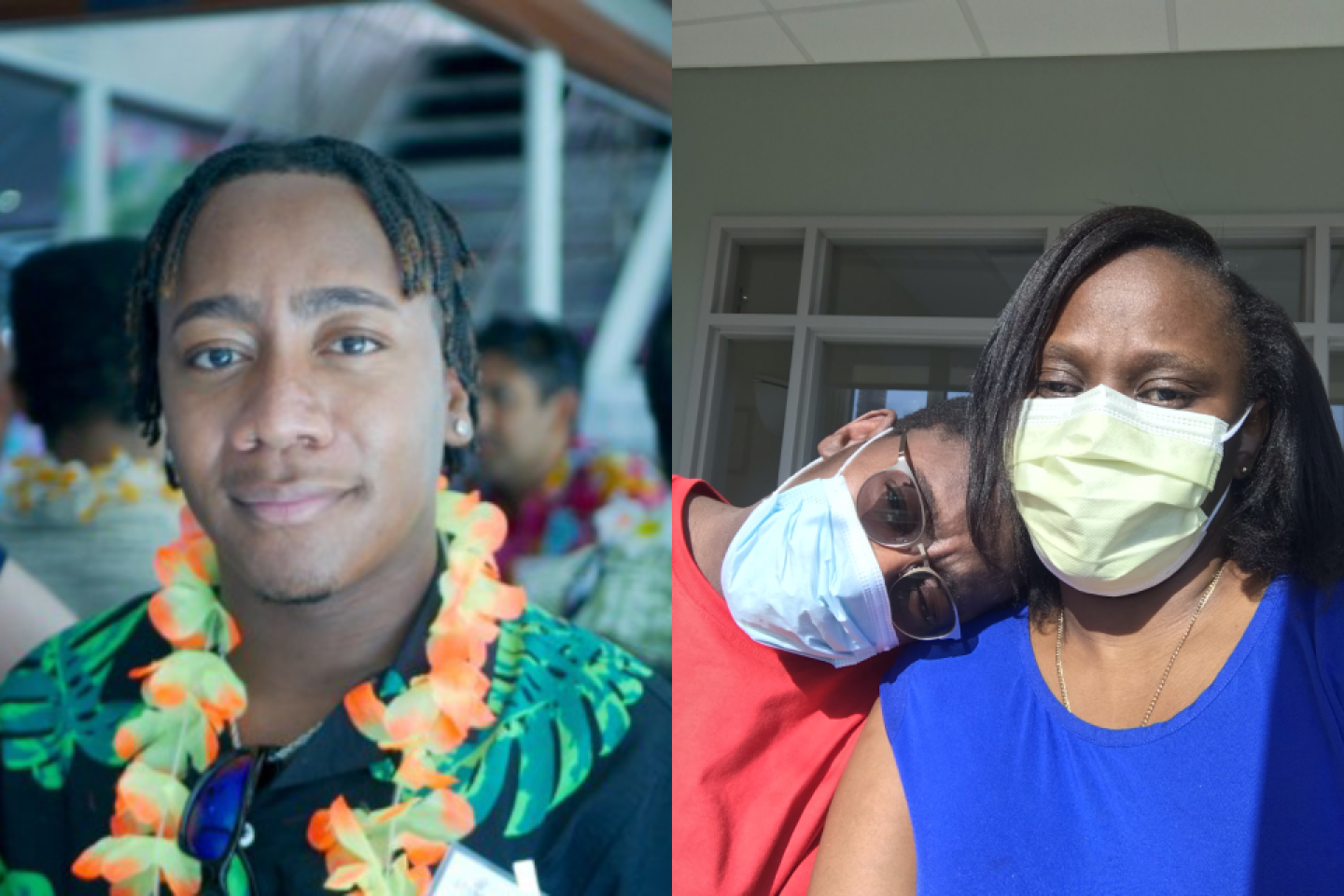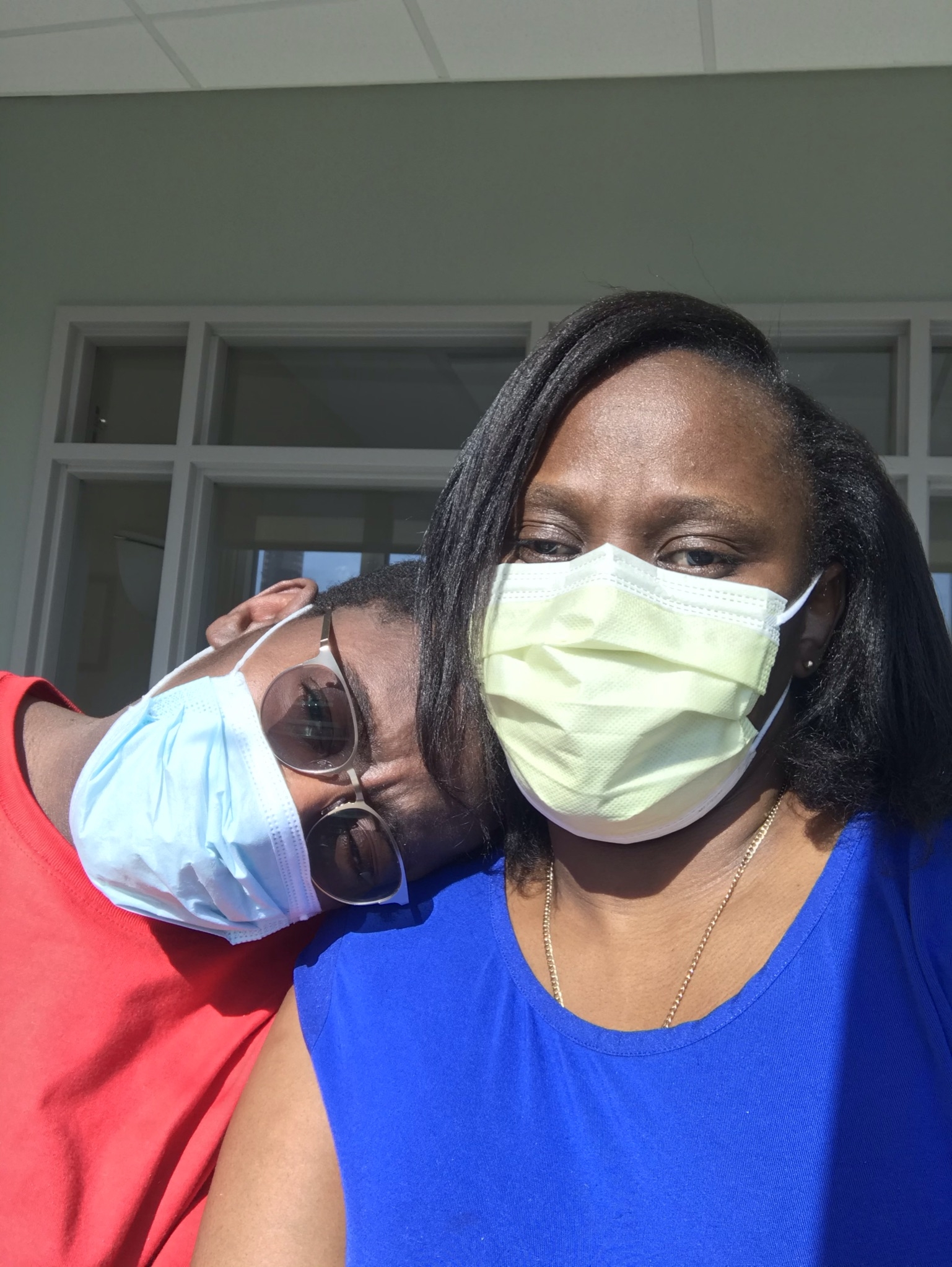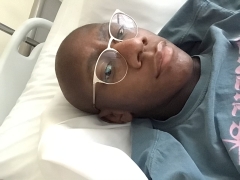
Throughout his life, Darius always felt sick. Diagnosed at birth with sickle cell disease, Darius’s childhood “normal” entailed frequent doctor appointments, and as he aged and the disease worsened, hospital stays nearly once a month.

Darius and his mom during one of his hospital visits.
Sickle cell disease is an inherited red blood cell disorder that affects hemoglobin, the protein in the blood responsible for carrying oxygen through the body. Typically, red blood cells are flexible and move easily, but in people with sickle cell disease, the “sickle shape” constrains the movement and can block the blood’s flow of oxygen throughout the body which can cause a number of problems and lead to organ damage. According to the Centers for Disease Control, while sickle cell disease can occur in all races, it occurs in about 1 out of every 365 new children born of Black or African-American descent.
In Darius’s situation, his kidneys bore the brunt of the damage from the sickle cell disease, causing kidney failure at the young age of 22. The kidneys are an essential organ, responsible for cleaning and filtering the blood and creating urine in the process and Darius needed dialysis three times a week to replace these normal kidney functions. This was in addition to ongoing blood transfusions to bring healthy red blood cells into his body.
While many medications and interventions exist to help manage sickle cell disease and the damage and pain it causes within the body, stem cell transplants can offer a cure.
Stem cell transplantation addresses the root problem of replacing the damaged cells responsible for faulty red blood cell formation. New stem cells from an outside donor can allow the body to create and produce healthy blood cells instead.
“Without curative treatment, the median life expectancy of patients with severe sickle cell disease is less than 50 years, but stem cell transplants do not come without risks or challenges,” said Dr. Alexandra Gomez-Arteaga, a hematologist and oncologist at Weill Cornell Medicine/NewYork-Presbyterian Hospital.
Because sickle cell disease runs in families, none of Darius’s siblings were suitable matched donors. This commonly occurs because relatives also may be suffering from the same disease. Additionally, there were no stem cell matches within the donor registry, which was also not surprising given that there are fewer donors from African American ethnicities in traditional registries.
Fortunately for Darius though, his 19-year-old sister was a partial match, allowing for Dr. Gomez to suggest moving forward with a more sophisticated stem cell transplant, called a haploidentical, or half-match, transplant.
“This approach allows us to treat patients who otherwise don’t have a fully-matched donor. We use a specialized process so that the healthy cells can adapt to their new environment while minimizing rejection issues, which is particularly important in expanding transplant access among people from all types of diverse ethnic backgrounds” explained Dr. Gomez.
For Darius, the ability to recive a stem cell transplant was further complicated by his kidney failure, as the preparation required to undergo a half-match transplant can also take its toll on the kidneys.
“Ultimately we determined that Darius was a good candidate despite these other variables and we were able to offer him this curative stem cell transplant in 2020, even admist the global pandemic,” Dr. Gomez said.

Darius after his transplant.
While the stem cell transplant process was challenging on the body, Darius immediately noticed positive changes. “Almost overnight, my palms became pinker, my energy levels increased, and I wasn’t as tired as usual,” he said.
Two years later, Darius was even eligible to receive a kidney transplant to repair the kidney damage due to having been cured of sickle cell disease. He now no longer needs dialysis.
“There are a lot of people with sickle cell disease that are unfortunately not aware of the possibility of a cure, including people who are more critically ill than I was,” Darius said. “Throughout this process I’ve come to realize that it is best to initiate a stem cell transplant before the disease causes too much damage to the body and I just wish I had known that sooner.”

Darius, Summer 2023.
During his recovery, Darius sought out connection within the sickle cell disease community via social media. He engaged on TikTok with another person who also underwent a stem cell transplant. He was so inspired after hearing about their experience that he, too, felt compelled to share his story and empower others going through similar experiences.
Sickle cell disease may have defined Darius’s childhood and adolescent years, but now at age 26, he’s thriving and continues to benefit from his new quality of life.
“Dr. Gomez initially warned me that a stem cell transplant might be the hardest thing I’ve ever had to do, but also shared that it could transform my life,” Darius reflected. “That could not have been more true.”